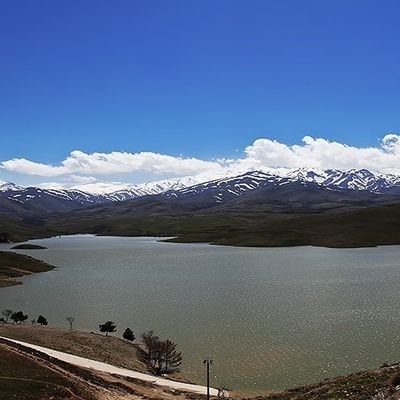SAEDNEWS; Chefs in Iran and throughout the world are developing daring fusions that appeal to adventurous palates, whether by blending Persian flavors with global ingredients or presenting meals with a contemporary twist.

According to SAEDNEWS, Iranian food has always been a complex combination of flavors, smells, and traditions. From saffron-infused stews to the delicate crunch of tahdig (crispy rice), it represents centuries of history and cultural variety. However, in today's culinary world, Iranian cuisine is growing, combining history and innovation to produce a unique, modern eating experience.
Modern Iranian cuisine is more than simply maintaining traditional dishes; it is also about recreating them to suit modern preferences. In this blog, we explore the interesting world of contemporary Iranian food and highlight some creative foods that you should try.
Popular traditional Iranian meals include kebabs, ghormeh sabzi, and fesenjan. However, with globalization and the growth of experimental cuisine, Iranian chefs have begun to test the limits of these classics. The end result is culinary masterpieces that honour the integrity of Persian cuisine while embracing cosmopolitan influences.
Young Iranian chefs, both in Iran and abroad, are taking up the task of updating Persian cuisine. Many have attended international culinary schools and worked in Michelin-starred restaurants, bringing back methods and concepts that effortlessly integrate with their Persian heritage. Modern Iranian cuisine frequently incorporates ingredients that are not commonly seen in Persian meals, such as truffle oil, quinoa, and wasabi. Chefs use these components to bring surprising twists to familiar dishes.
This recipe is an excellent example of East meets West, combining the nutty richness of Iranian pistachios with a succulent fillet of salmon. The barberry reduction, produced from tart zereshk (barberries), offers a blast of flavor similar to Persian sour stews. The pistachio shell provides a pleasant crunch, while the barberries add a zing that balances the salmon's richness.

Risotto, an Italian staple, is given a Persian twist by adding saffron and served with koobideh kebabs. The creamy smoothness of the rice matches the smoky, juicy kebabs, resulting in a meal that is both opulent and comforting. Saffron's vivid perfume unites the two cuisines, while the kebabs offer a distinct Persian flavor.
This meal blends the acidic sweetness of pomegranate arils with creamy feta cheese and is served on toasted bread. A sprinkle of pomegranate molasses brings it all together, making this an ideal appetizer for Persian-inspired evenings. The combination of textures—crunchy bread, creamy cheese, and juicy pomegranate—makes this meal a delectable blend of Persian and Mediterranean flavors.
Fesenjan, a traditional pomegranate and walnut stew, is given new life as a taco filler. Slow-cooked duck meat covered in creamy fesenjan sauce is served on a soft tortilla with fresh herbs and pickled red onions. The taco style makes this classic Persian dish convenient and portable, while the toppings brighten the rich, nutty sauce.
These ice cream sandwiches highlight rosewater, a Persian dessert classic. Rosewater ice cream is served with pistachio biscuits, providing a contemporary spin on classic Persian desserts. The flowery flavors of rosewater are nicely balanced by the nutty crunch of pistachio biscuits, resulting in a dessert that feels both sumptuous and light.
Move over, pumpkin spice—saffron and cardamom lattes are here to stay. These sumptuous drinks combine espresso with steamed milk flavored with saffron and cardamom, resulting in a comforting, fragrant drink ideal for the winter. The unique spices transform a basic latte into an unforgettable experience, bridging the gap between coffee culture and Persian traditions.

Tahdig, the crispy rice at the bottom of a pot, is being reinvented in several ways. Some cooks add turmeric and cumin to enhance the flavor, while others top it with quinoa or wild rice. Avocado and smoked salmon make it a more refined appetizer. Tahdig's international appeal stems from its texture, and these contemporary variations increase its adaptability.
While these ideas are gaining traction in Iran, Iranian chefs overseas are also creating headlines. Persian restaurants in cities such as London, Los Angeles, and Toronto provide contemporary variations on classic foods.
Shirin's Table (Los Angeles) - This innovative restaurant serves fesenjan meatballs and saffron-infused pasta, combining Persian ingredients with Western styles.
Barberry & Spice, London - This café is known for its Persian-inspired breakfasts, which include Persian shakshuka with pomegranate seeds and feta.
The Tehran Bistro (Toronto) - This premium restaurant serves Persian stews with handmade bread and sweets such as saffron panna cotta.
Modern Iranian cuisine serves as a cultural bridge rather than merely a source of nourishment. By combining Persian cuisines with global methods, chefs promote cross-cultural understanding and appreciation. Despite the contemporary changes, these dishes remain strongly rooted in Persian culinary traditions. The usage of saffron, pomegranate, and rosewater preserves the flavor of Iranian cuisine. For younger Iranians, fusion food provides an opportunity to engage with their ancestry in a way that seems contemporary and interesting.
Challenges:
Preserving Authenticity: Balancing tradition with innovation may be difficult, since some believe that new innovations diminish the essence of Persian food.
Ingredient accessibility: Many traditional Persian ingredients are difficult to get outside of Iran, restricting the possibility of experimenting.
Opportunities
- world Recognition: Modern Iranian cuisine has the potential to elevate Persian cuisine to the world stage, drawing food enthusiasts from diverse backgrounds.
- Creativity Unleashed: The combination of tastes allows for unlimited experimentation, guaranteeing that Persian cuisine continues to grow.
Modern Iranian food exemplifies the originality and tenacity of Persian culture. Chefs are not only preserving the essence of Persian cuisine, but also making it more accessible and appealing to a worldwide audience by combining tradition with innovation. Whether it's fesenjan tacos, saffron lattes, or pistachio-crusted fish, these recipes provide the best of both worlds: they commemorate the past while welcoming the future. So, the next time you're searching for a gastronomic adventure, dive into the vibrant and delectable world of modern Iranian food. Every bite tells a narrative, carries a heritage, and delivers a rush of taste.

